
This isolated facade is all that remains of Anhalter Bahnhof, once the largest railway station in the Europe. Designed by Franz Heinrich Schwechten in 1872 it was opened in 1880 by Kaiser Wilhelm I and Chancellor Otto von Bismarck. You could take a train from here to Dresden, Prague, Vienna and to places as far away as Rome, Naples and Athens.
During World War II it was one of three stations used to deport Berlin’s Jews, taking over 9,600 in 116 trains to Theresienstadt in Nazi-occupied Czechoslovakia, from here they were transferred to concentration camps. They left Anhalter station in carriages, often attached to other trains rather than in the cattle trucks used elsewhere.
It was severely damaged in by bombing in November 1943, and mostly destroyed in February 1945. It took some time to restore rail services, and they only resumed fully in Novemebr 1947 and repairs continued until the following May. The station was in West Berlin, but the rail services to it ran through East Berlin from Soviet-controlled East Germany, and in 1952 Deutsche Reichsbahn switched them all to Ostbahnhof in the Eastern sector and the station closed. It was demolished despite public outcry in 1960 with just this fine entrance at the centre of its façade with its Ludwig Brunow Day and Night sculptures kept. These were replaced by replicas during restoration in 2003-4.
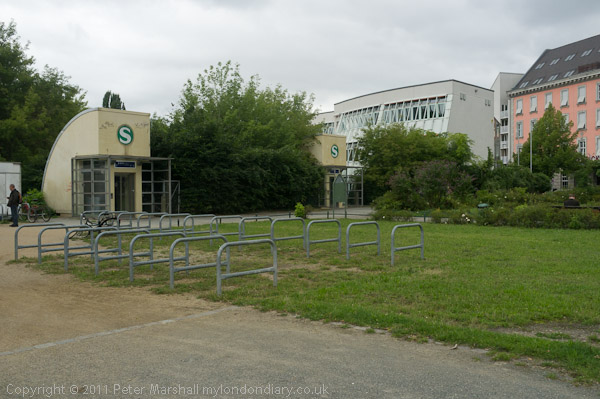
Suburban train services continued to serve the Anhalter Bahnhof S-Bahn station which was in West Germany. Although this north-south line had first been planned in 1892, this part of the line was only built in 1939 as a part of Hitler’s public works programme to employ unemployed workers, although parts of the station had been finished in 1936.
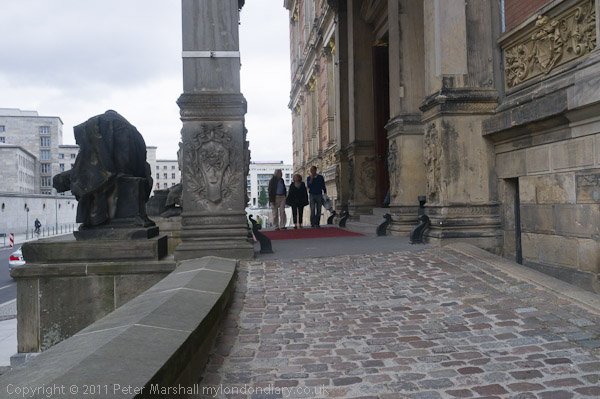
Our walk continues to a street full of museums, with the Abgeordnetenhaus Berlin, ((House of Representatives) a grand neo-Renassiance property home to Berlin’s State Parliamenton one side
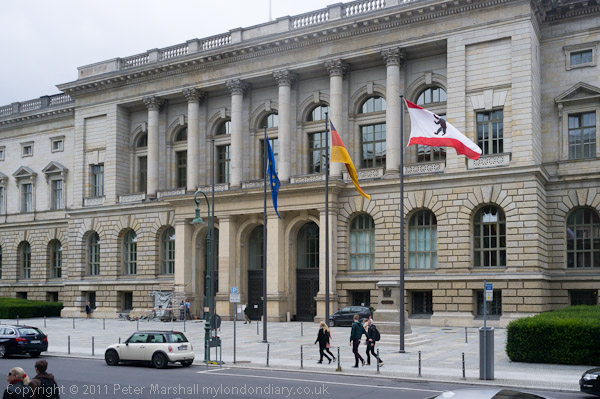
and Martin-Gropius-Bau with shows of contemporary art, photography & archaeology on the other. We went in briefly but didn’t stay long.
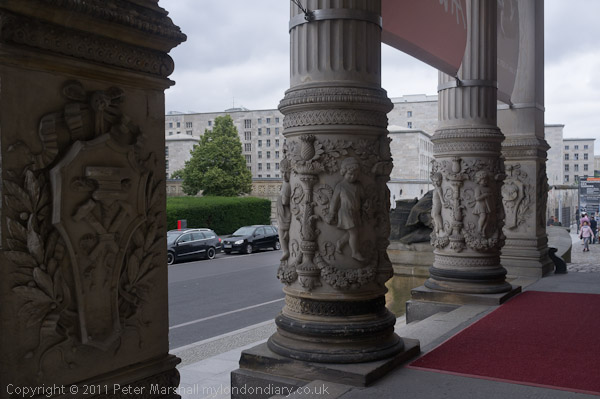
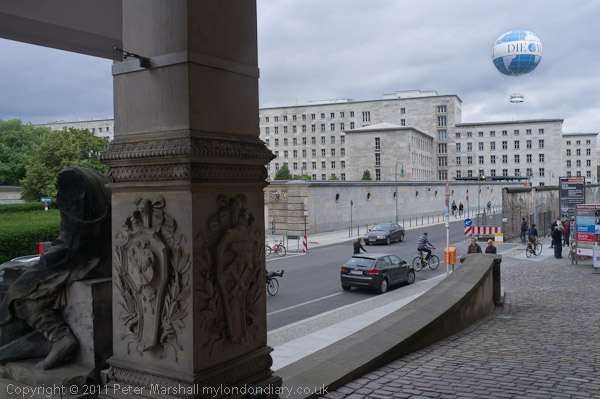
The helium balloon is a tethered tourist attraction which we had seen earlier from beside the memorial at the top of the Kreuzberg in Viktoria Park. It goes up 150m for you to admire all-round views of Berlin for 15 minutes. We decided it was too expensive.
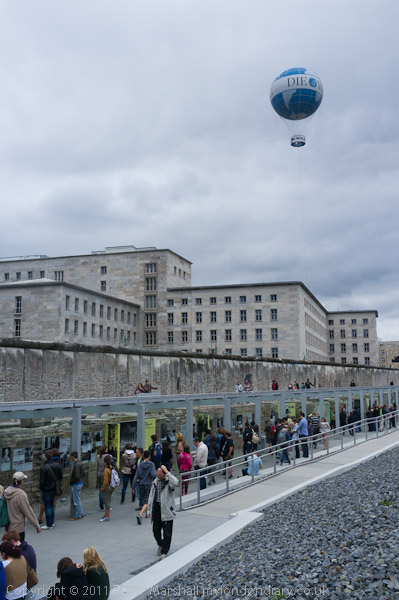
Just down the street is a permanent free open-air exhibition ‘Topography of Terror’ on the site of the former Gestapo headquarters which documents in some detail the horrors of Nazism.
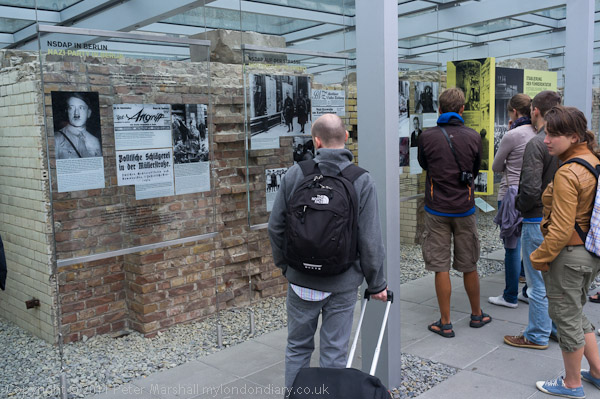
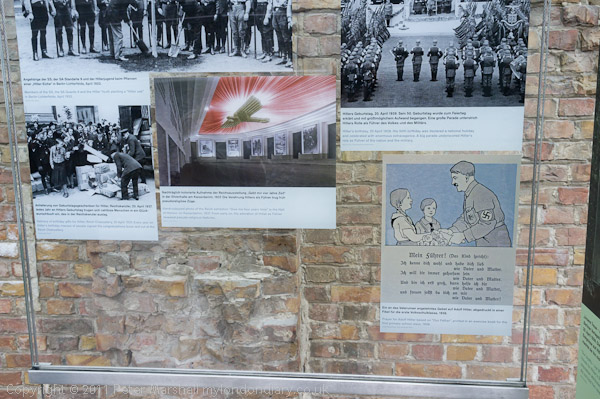

Above the covered exhibition is a walkway alongside a section of the Berlin Wall, the concrete barrier which divided the city in two from 1961 to 1989.
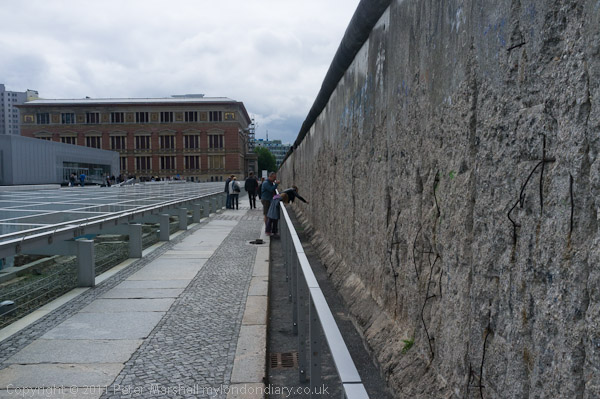
And through a hole made in the wall we could see a Berlin Bear in front of a grim office building, which I think is a part of the former Reich Air Ministry (Reichsluftfahrtministerium) whose main entrance is around the corner on Wilhelmstrasse, built on the orders of Reichsmarschall Hermann Göring between 1935 and 1936. Designed by Ernst Sagebiel (1892-1970) when built it was the largest office building in Europe with its 2,800 rooms, 7 km of corridors and over 4,000 windows. After the war it became the Soviet military headquarters, then the home of the GDR Council of Ministers. According to rumour the many swastikas on its blocks of marble are still there, as the blocks were simply turned around to hide them. At the start of the 1953 East German Uprising it was stormed and briefly occupied by 25,000 striking workers before Soviet troops arrived. It has Soviet-era murals on the north side, but I didn’t think a great deal of them. It now houses the German Ministry of Finance.
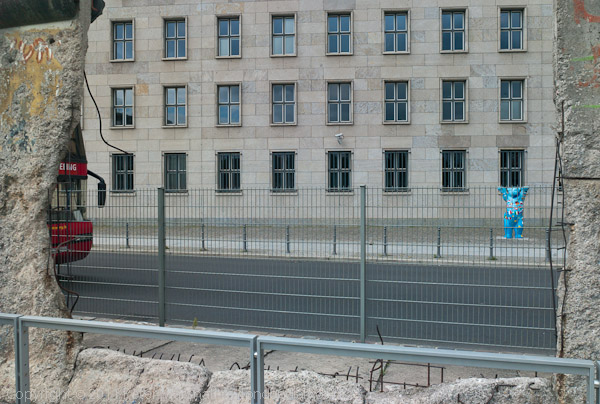
Our walks around Berlin continue in later posts.
Previous Berlin post
______________________________________________________
There are no adverts on this site and it receives no sponsorship, and I like to keep it that way. But it does take a considerable amount of my time and thought, and if you enjoy reading it, a small donation – perhaps the cost of a beer – would be appreciated.
My London Diary : London Photos : Hull : River Lea/Lee Valley : London’s Industrial Heritage
All photographs on this and my other sites, unless otherwise stated, are taken by and copyright of Peter Marshall, and are available for reproduction or can be bought as prints.
To order prints or reproduce images
________________________________________________________